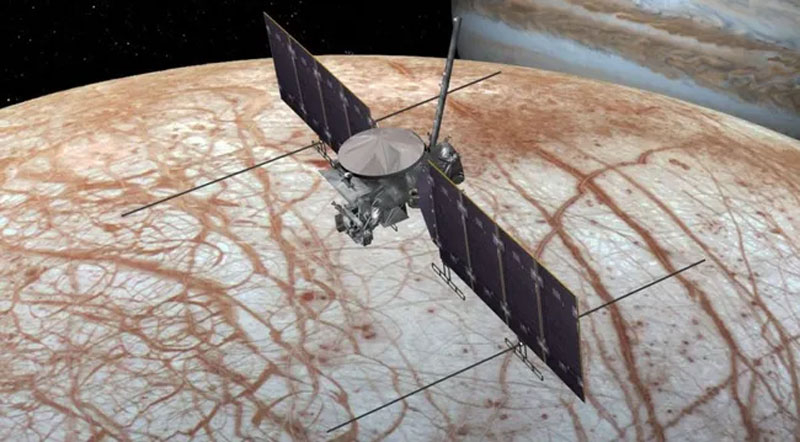NASA reported that the power transistors in the power control unit of the Europa Clipper probe do not withstand the expected level of radiation. The unit is in a protective casing – it is sealed in October 2023. If a decision is made to replace components, the October launch of the probe into the Jupiter system could be delayed by up to two years. Otherwise, the $5 billion mission will become impossible.

An artist’s impression of the Europa Clipper probe. Image source: NASA
The Europa Clipper probe is scheduled to leave for the Jupiter system in October 2024, with a goal of arriving there in 2030. Over the course of 3.5 years of scientific work in the system, the probe will make 50 flybys of the giant planet, during which it will be able to make close approaches to its main target – Jupiter’s satellite Europa. Europe is of interest to scientists due to the probable presence of a global ocean under many kilometers of ice armor. The probe’s instruments should try to detect on Europa traces of biological life known to us on Earth. Moreover, in a few billion years our Sun will shed its shell and destroy the Earth, so the Jupiter system can become a new home for earthlings, if, of course, there are oceans of water there.
As NASA has now reported, the “MOSFET-like electronic devices” field-effect transistors of the Europa Clipper power unit turned out to be susceptible to lower doses of radiation than those that the probe will encounter at Jupiter. The magnetic field of the gas giant is 20 thousand times more powerful than the Earth’s magnetic field – it is capable of accelerating charged particles to colossal energies, which in theory can damage the probe’s semiconductor devices. The problem surfaced back in May, NASA explained, and now the agency’s laboratories are conducting rapid testing of similar transistors for resistance to radiation. The transistor manufacturer is called Infineon Technologies. Why such an overlap occurred is not reported.

If Europa Clipper’s launch had to be delayed, the agency would have a 2-year window to send the probe to the Jupiter system. Fortunately, the engraved sign telling aliens where to look for life in the solar system will not be damaged in any case. She is not afraid of radiation.